Don’t Leave the Pharmacy Without Checking These 7 Things
Every year, over 1.5 million people in the U.S. are harmed by medication errors - and many of them happen right at the pharmacy counter. You might think pharmacists catch everything, but the truth is, prescription verification is the last line of defense - and it’s yours. Studies show that when patients actively check their meds, errors drop by nearly 37%. That’s not luck. That’s power. Here’s how to use it.
1. Confirm Your Name and Date of Birth
It sounds basic, but wrong patient errors are the third most common mistake in pharmacies. You might get someone else’s blood pressure pill because the names sounded alike. Always check the label: Is your full legal name spelled exactly right? Is your date of birth correct? Pharmacy safety protocols require two identifiers, and yours should match what’s in their system. If it doesn’t - stop. Don’t take the bottle. Ask them to double-check.
2. Match the NDC Number
Every pill bottle has a National Drug Code (NDC) - a 10- or 11-digit number usually printed near the bottom of the label. This isn’t just a barcode. It’s the medication’s fingerprint. Look it up on the FDA’s NDC Directory website (you can search it on your phone). Does it match the drug you were prescribed? If you got a generic, does the NDC match the generic version your doctor ordered? About 8% of errors happen because the right drug name is on the label - but it’s the wrong medicine inside. The NDC catches that.
3. Check the Strength and Form
“I was supposed to get 5 mg, but they gave me 10 mg.” That’s the most common kind of error. Dosage mistakes make up over a third of all prescription problems. Look at the label: Is it 5 mg, 10 mg, or 20 mg? Does it say “extended-release,” “immediate-release,” or “sustained”? If your doctor wrote “Lisinopril 10 mg once daily,” but the bottle says “20 mg,” that’s not a typo - it’s a danger. Don’t assume the pharmacist knows what you meant. Say it out loud: “This is supposed to be 10 mg, right?”
4. Count the Pills
Pharmacists dispense hundreds of pills a day. Mistakes happen. You might expect 30 pills, but get 28. Or worse - you get 60 instead of 30. Count them right there at the counter. Don’t wait until you get home. Studies show that 23% of quantity errors are caught only when patients count immediately. If it’s a liquid, check the volume. If it’s a patch, check how many are in the pack. If the count doesn’t match what your doctor ordered, ask why. A good pharmacist won’t mind.
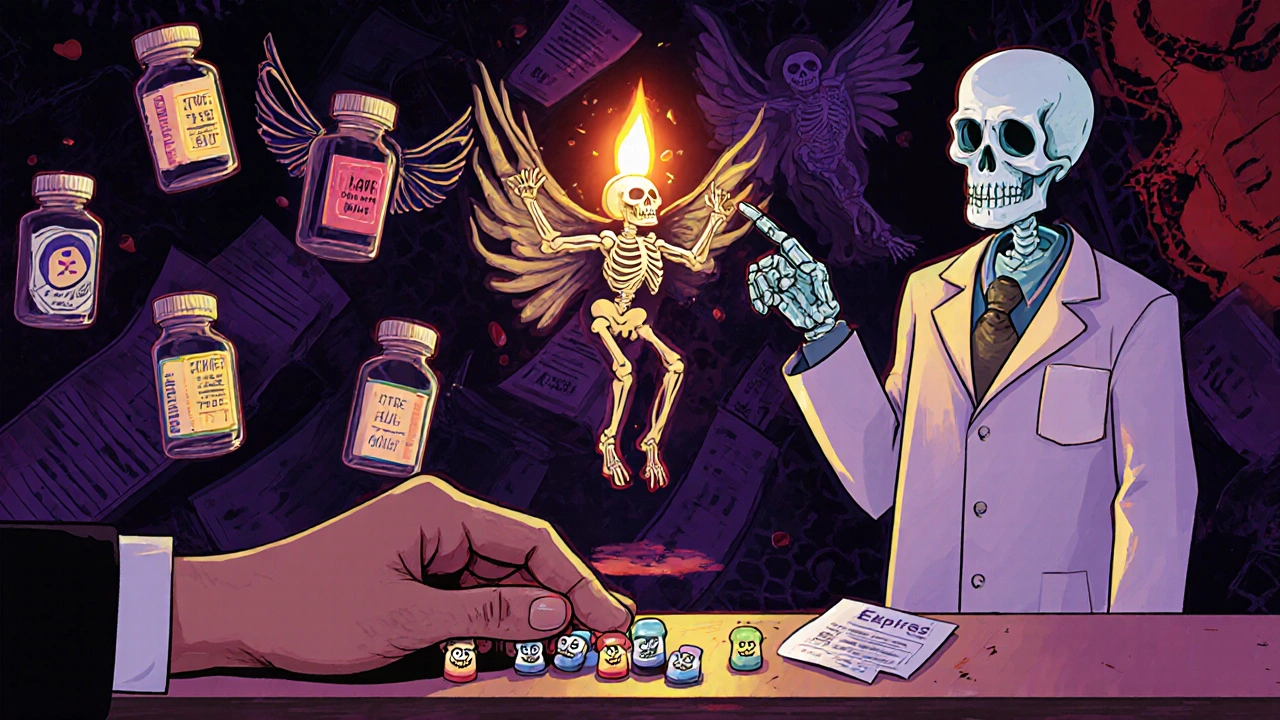
5. Understand the Instructions
“Take one by mouth twice daily.” Sounds simple - until you realize it says “take with food,” but you’ve been taking it on an empty stomach. Or it says “take at bedtime,” but you’ve been taking it at noon. Illegible handwriting, unclear abbreviations, or rushed explanations cause nearly 19% of errors. Don’t nod and smile. Ask: “What does ‘QD’ mean?” “Is this taken before or after meals?” “Can I crush this pill?” If the instructions are printed in tiny font, ask for a printed copy or use your phone’s camera to zoom in. You have the right to understand how to take your medicine.
6. Inspect the Expiration Date and Packaging
Expired meds don’t just lose potency - they can become unsafe. Check the expiration date printed on the bottle or box. It should be at least six months out - most pharmacies won’t dispense anything with less than three months left. Also, look at the packaging. Is the seal broken? Is the bottle cracked? Is the label peeling? If it looks off, say something. In 2023, over 4% of recalled medications reached patients because they were expired or damaged. That’s not your fault - but it’s your chance to stop it.
7. For Controlled Substances: Ask About the Prescription
If you’re picking up opioids, stimulants, or other controlled drugs, there’s extra verification built into the law. Pharmacists must confirm your address and the prescription’s legitimacy. But you can help. Does the prescription look handwritten? Is it from a doctor you know? If you got it through a telehealth visit, did the pharmacy call your doctor to confirm? You’re not being suspicious - you’re being smart. DEA rules require this step, and pharmacists are trained to verify it. If they seem rushed or avoid answering, ask to speak to the pharmacist in private.
What to Do If Something Feels Off
Most pharmacists want you to check. In fact, 78% say patient verification is essential to their job. But 63% of patients who raised concerns say they were brushed off. If you’re ignored, stay calm but firm. Say: “I’m not trying to argue - I just want to make sure this is right. Can we double-check the label together?” If they still won’t help, ask to speak to the pharmacy manager. You can also call the state board of pharmacy. Your safety matters more than their schedule.
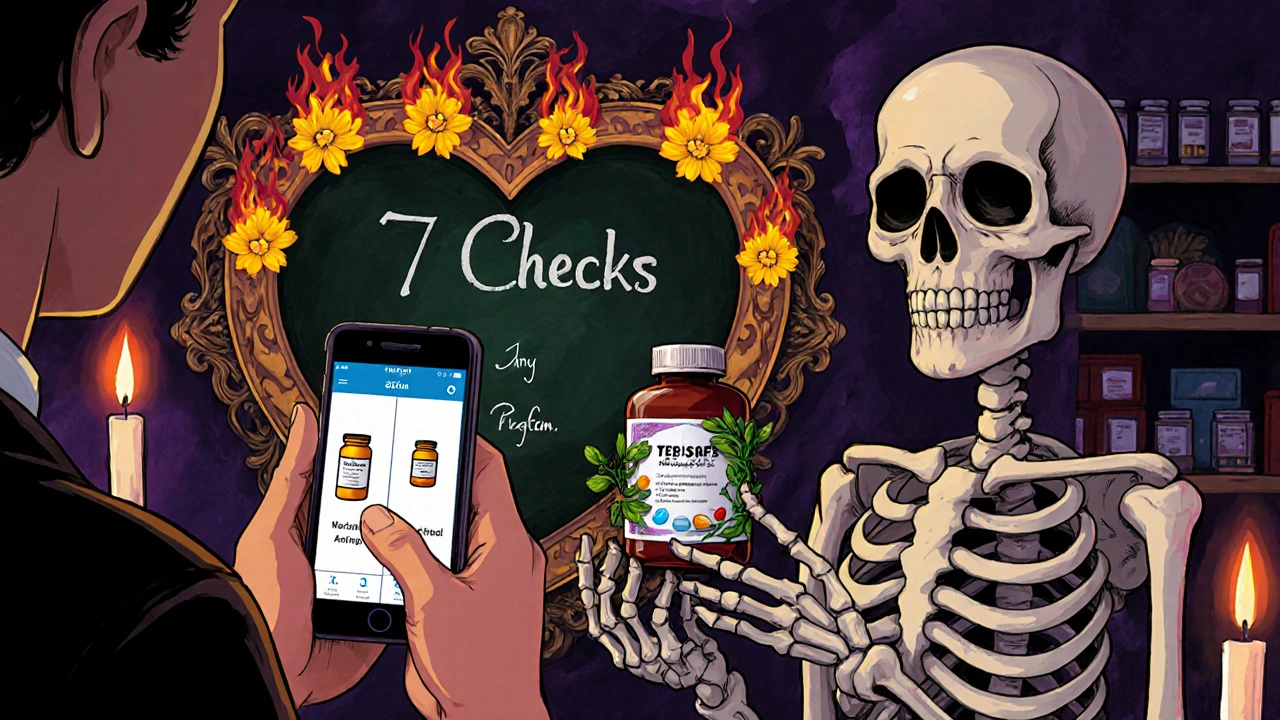
How to Prepare Before You Go
Don’t wait until you’re handed the bottle to start checking. Before you leave home:
- Write down your medication’s name, strength, and how often you take it.
- Know your doctor’s name and phone number in case the pharmacy needs to call.
- Bring your old pill bottle if you’re refilling - it helps the pharmacist compare.
- Use your phone to take a picture of the label from your last fill. Compare it side-by-side.
Many pharmacies now offer digital verification tools. CVS and Walgreens have tablet stations where you can scan a barcode and see a photo of the pill before you pick it up. Ask if your pharmacy has one. It’s not magic - it’s just better safety.
Why This Matters More Than You Think
Every dollar spent on patient verification saves $8.73 in avoided hospital visits, ER trips, and long-term health damage. That’s why CMS now penalizes pharmacies with error rates above 0.85%. It’s not just about your safety - it’s about making the system better for everyone. When you verify your prescription, you’re not being difficult. You’re helping fix a broken part of the system.
What You Can’t Catch - And What to Do About It
Not every error is visible on the label. You won’t know if you’re getting two drugs that interact badly. You won’t spot if you’re getting duplicates of the same medicine from different doctors. That’s where your pharmacist comes in. Always ask: “Is this safe to take with my other meds?” If you’re on five or more drugs, ask for a medication review. Most pharmacies offer this for free. Don’t wait until something goes wrong.
Final Tip: Make It a Habit
Verification isn’t a one-time thing. It’s a habit. Every refill. Every new script. Every change. The more you do it, the more you’ll notice patterns. You’ll start recognizing what your meds look like. You’ll know if the pill color changed. You’ll catch the small stuff before it becomes a big problem. That’s how real safety works - not by luck, but by paying attention.
What should I do if I find an error on my prescription label?
Stop. Don’t take the medication. Ask the pharmacist to double-check the prescription with your doctor’s office. If they dismiss you, ask to speak to the manager. You can also report the error to your state’s board of pharmacy. Keep a copy of the label and the medication for your records. Most pharmacies will replace the medication at no cost if it was their mistake.
Can I verify my prescription online if I use a mail-order pharmacy?
Yes - but it’s harder. Mail-order pharmacies should send you a printed label with the NDC number, expiration date, and dosage. Compare it to your doctor’s instructions. Many offer online portals where you can view a photo of the pill before it ships. If you’re unsure, call them. Ask: “Can you confirm the NDC matches my prescription?” Don’t assume everything is correct just because it came in the mail.
Why does my generic pill look different from the brand name?
Generic drugs must contain the same active ingredient, strength, and dosage form as the brand name - but they can look different in color, shape, or size because of different inactive ingredients. That’s normal. But you should still check the NDC and name on the label. If you’re confused, ask the pharmacist: “Is this the same medicine I used to take?” They can confirm it’s the correct generic.
Should I verify my prescription even if I’ve taken this medicine before?
Yes - and even more so. Studies show that patients who assume they know what they’re getting are more likely to miss errors. Dosages change. Formulations switch. Generic brands vary. Just because you’ve taken it before doesn’t mean this bottle is right. Always check the label, even for refills.
What if I don’t understand the medical terms on the label?
Ask the pharmacist to explain them. Terms like “QD,” “BID,” or “PRN” are common but confusing. “QD” means once daily. “BID” means twice daily. “PRN” means as needed. Don’t guess. Write them down. Most pharmacists will gladly translate the label into plain language. You’re not the first person to ask - and you won’t be the last.

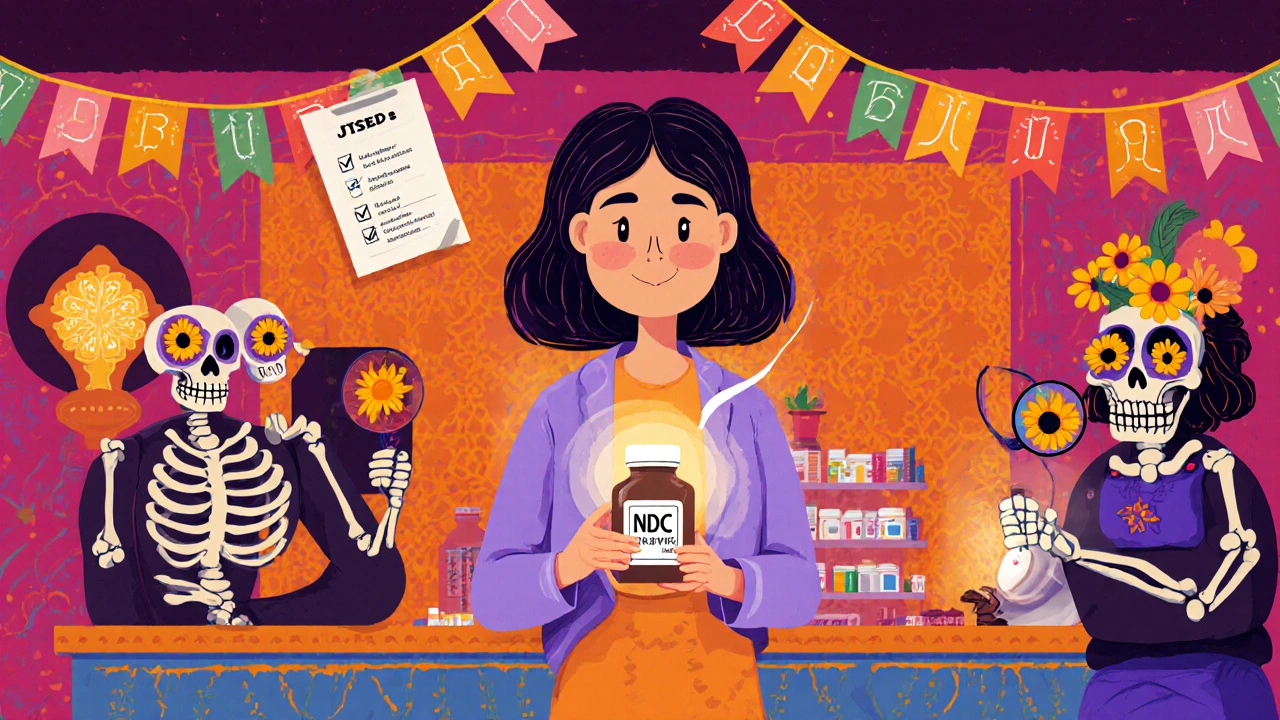


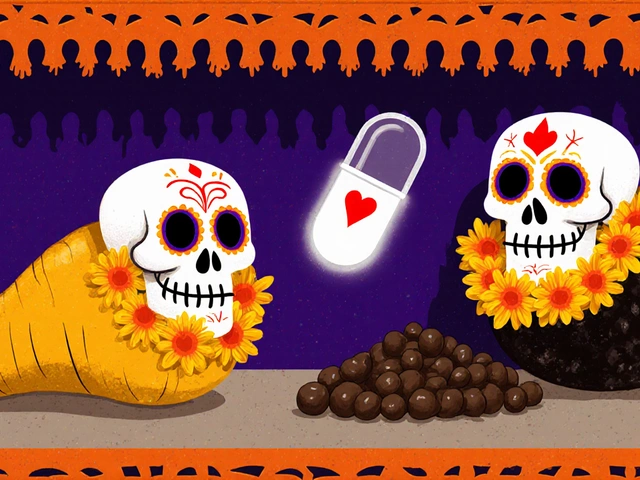
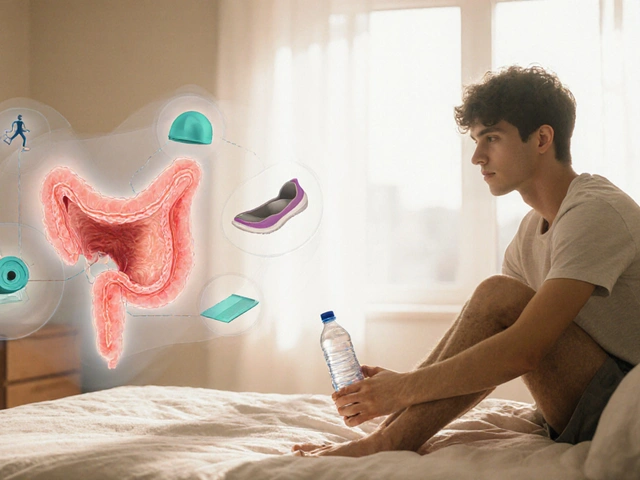

11 Comments
Rebecca Cosenza November 20, 2025
I check every label. Every. Single. Time. 🛑
swatantra kumar November 21, 2025
Wow, so in the US you actually have to *think* when picking up medicine? In India, we just grab the bottle and go. 🤷♂️😂 At least you’ve got the option to not die from a typo.
Cinkoon Marketing November 23, 2025
Honestly, I’ve been doing this since my mom got the wrong antidepressant in 2016. I always compare the pill color to the picture on the pharmacy app. Also, if the bottle smells weird? Red flag. I once got a bottle that smelled like burnt plastic. Turns out it was a counterfeit batch. 🧪
robert cardy solano November 24, 2025
I used to think this was overkill. Then my buddy got 10x his dose of metoprolol because the pharmacist misread the script. He ended up in the ER with a heart rate of 38. Now I count pills. I check NDCs. I ask dumb questions. No shame.
Pawan Jamwal November 26, 2025
This is why Americans are so weak. In India, we trust our doctors and pharmacists. No checking. No fuss. You want safety? Build a better system, not paranoid patients. 🇮🇳💪
Bill Camp November 27, 2025
THEY DON’T WANT YOU TO KNOW THIS. The FDA knows 73% of these errors are covered up. Pharmacies get fined if they report too many mistakes. So they just hand you the bottle and hope you don’t die. I’ve seen it. I’ve seen the logs. You’re not being paranoid - you’re being the only adult in the room.
Lemmy Coco November 27, 2025
i always check the ncd number but i keep forgetting to count the pills. last time i got 32 instead of 30 and i only noticed when i ran out two days early. oops. but now i use the app to take a pic before i leave. its a habit now. kinda weird but worth it.
rob lafata November 29, 2025
You people are pathetic. You’re outsourcing your cognitive responsibility to a pharmacy that’s underpaid and overworked. You think slapping a label on a bottle makes you safe? You’re just reinforcing a broken system. The real problem is that your doctor doesn’t know what they’re prescribing, your insurer forces generics without context, and you’re too lazy to read the damn pamphlet. Stop checking bottles and start demanding better care.
Matthew McCraney November 30, 2025
I don’t trust any of this. The government and Big Pharma are in cahoots. The NDC numbers? Fake. The expiration dates? Printed to look legit. I once got a bottle of lisinopril that had a QR code that linked to a .gov site - but the SSL cert expired in 2019. Coincidence? I don’t think so. I now only take herbs and pray. And I keep the bottle. Always.
serge jane December 1, 2025
I used to think checking labels was just a checklist. Now I see it as a quiet act of resistance against a system that treats human bodies like inventory. We’ve turned medicine into a transaction and forgotten that it’s a relationship - between patient, doctor, pharmacist, and the body that’s supposed to heal. When I count my pills, I’m not just verifying dosage. I’m reaffirming my right to exist without being screwed by a typo.
Nick Naylor December 2, 2025
Per FDA 21 CFR § 211.22, the Pharmacist-in-Charge is legally responsible for final verification. Per USP <17> standards, patient verification is NOT a substitute for professional judgment. Your checklist is a band-aid. The real solution is mandatory pharmacist-patient counseling (which is federally underfunded), and the fact that 83% of U.S. pharmacies are corporate-owned, not independent, means your ‘checklist’ is just a compliance theater. Stop patting yourself on the back. The system is still broken.